The Songbird Cafe Girls: Mollie Cinnamon is Not a Cupcake
Detailed Teachers’ Notes Written by Liz Morris
Chapter 1
1. They say you should never judge a book by its cover. But what about its title? Do you like this title? Can you say why/ why not? Have a look around the nearest bookshelves. What do you think of the titles? With a friend, think of amusing and/ or unusual titles for some of the books eg How Cheese and Crackers Brought About My Downfall, or The Many Vicissitudes of Apollyon O’Shaughnessy. You might choose your favourite and design a book jacket that would reflect your new title.
2. Read the opening two paragraphs again, two or three times, then close the book and visualise! When you can picture the island in your mind, see if you can represent it in paints or charcoals or pastels. Write the date on the back of your work. When you have finished the book, paint the opening paragraphs again. Display the paintings and compare the first with that you painted previously. Discuss the differences, if any, with the class.
3. The author uses words creatively to add richness to the descriptive details in the book eg seasidey colours (p9), forty lumpy minutes (p10), all sing-songy (p11). Can you think of any word-pictures or word-paintings of your own that might convey the feeling or the perception of something?
4. Mollie probably had watched the children’s educational programme Sesame Street (p9) and the film ET (p13) with her Granny Ellen. If you are not familiar with these, you will easily find them online (if your parents/school permit use of the internet). What TV programmes or film might the author use as detail if she were writing about 2015? What other details can you find in the book that definitely locate events in the twentieth century?
5. Mollie misses home (p13). She misses Dublin and Flora, and she doesn’t feel like talking to her nan. With a partner, think about what Mollie might have said in answer to her nan’s questions. Record the answers and play them back for the class. Do your Mollie-answers match those given by the other groups?
Chapter 2
1. Granny Ellen had never talked about Nan, and Mollie had never been allowed to ask about it (page 17). Now she guesses that her family background has been discussed by Nan and Alanna, and this irritates her (page 18). It is healthy for us all to develop an appreciation for our family background and a realisation of how it shapes identity, but it is sometimes difficult for us to talk about significant events in our lives.
With a friend, can you discuss how Mollie felt and how you might feel if you knew that others had been discussing your family background? Close your eyes for a moment and think about the things about your family that you don’t want to share with others. Now think about the things about your family that you are happy to share with others. Would you like to share some of the latter with your partner/group/class?
2. Click is the name of the dolphin living in the bay and Mollie is excited to see him as she has never seen a real-life dolphin before. Many people love to swim with dolphins – but dolphins are wild animals and there are safety implications that must be evaluated and assessed before we jump into the water with a dolphin! Discuss the risks/ possible dangers and the best way of dealing with a situation where your friend might want to get in and swim (with or without a dolphin) in an unsupervised area. What could you say or do to persuade your friend to make a good decision? What might you do if your friend made a decision that might lead them in to danger?
3. Nan has to tell Mollie something about St Brigid when she explains that the little straw dolls dressed in white cotton skirts and green cloaks are called Brideogs (page 24). Strangely, it was traditional for the man of the house to twist straw or rushes to form these little dolls. Can you think of a reason for this?
The children of the house would have gathered the first buds or flowers of spring, pretty stones and green leaves to decorate the Brideogs. Can you find some other folk customs practised on the feast of Brigit/ Brigid? Which is your favourite? Try to write at least five interesting facts about Bríd and the ancient celebration of Imbolc. You might write these facts in the shape of a Brigid’s cross.
4. Have you ever heard anyone recite the first line or two of this poem on Lá ‘le Bríde? Generations of Irish people learned ‘Cill Aodáin’ when they were at school. It was written by Antoine Ó Raifteirí (Raifteiri).
‘Anois teacht an Earraigh beidh an lá ag dul chun síneadh/ Is tar éis na Féile Bríde ardóidh mé mo sheol…’ (‘Now with the coming of Spring, the day will be lengthening /stretching/ And after the feast of Brigid I’ll rise up my sail…’)
Many believe he also wrote the well-known ‘Mise Raifteirí an File’, though others say Seán Ó Ceallaigh wrote it as a tribute to the blind poet. Here are the first few lines. What do you feel as you read?
Mise Raifteirí an file,/ Lán dóchas is grá,/ Le súile gan solas, /Le ciúnas gan chrá….’
(I am Raftery the poet, Full of hope and of love, With eyes that don’t see, With peace without trouble.)
The first four lines of this poem appeared on the old Irish £5 note. Can you find an image of this note?
5. Do some research on the life of the poet. He had a sad life but his poems are still read and appreciated to this day. Imagine you can inform him of his continued relevance in the 21st century. Visualise his reaction. Can you write the dialogue you and he might have if you were to meet him/his ghost?
6. Granny Ellen is very superstitious, always saluting single magpies to ward off bad luck. She avoided walking under ladders and stepping on cracks in the pavement and picked up pins and “lucky pennies” all the time. She also made wishes on all kinds of things: shooting stars, rainbows, engagement rings. Many people make a wish as they stir a Christmas pudding, or when they eat the first new potato of the year though it is best not to expect too much from wishes as you might well be disappointed! Some religions frown on making wishes /practising superstitions – can you think why? Make a list of other occasions that might cause Granny Ellen to make a wish/ and/or make a list of other superstitions commonly practised by people today.
7. ‘If wishes were horses, beggars would ride’ is a saying or a proverb that may date back to the 16th century
Your wish: Take a day to think about something you really wish for. You might write it in your secret diary, or on a slip of paper that you could roll or fold and hide in a safe place. Or you might type and then print your wish in class, and when everyone has done this, you could create a collage of wishes, or hang them on a branch of a tree and create a wishing tree.
Chapter 3
1. With partners, represent your image Nan’s home using a diorama. When finished, you might take photographs and send these to the author – you’d never know, she might credit them and put them up on her website. (You can email her: sarahsamwebb@gmail.com)
2. Mollie thinks Nan’s photos are very good, like ‘images you’d see in a magazine.’ Your teacher might provide a disposable camera for the class so that each child can take a photo of something in the school corridors or grounds. Remember not to take photos of any pupils and try to choose interesting and amusing angles for your photo. Stick the photographs on the display board and write humorous captions for each.
3. Red Moll used to command her crew ‘to howl like banshees’. The bean sí or bean sidhe is said to wail to warn of impending death in a neighbourhood family, and sometimes she is said to sit combing her long hair, weeping and wailing eerily. Can you suggest other [allegedly!] mythical creatures which are commonly referred to in everyday speech? What meaning are they used to convey? (eg an inscrutable or enigmatic person might be described as sphinx-like, someone who is very faithful or loyal might be called Penelope after the wife who waited ten years for Odysseus to return from his adventures, someone forever looking for good fortune at the end of a rainbow or even someone stereotypically Irish might invoke mention of leprechauns etc). See how many you and your partner/ group can list.
4. Mollie really misses her Granny Ellen, misses her ‘so much it hurts’, but she doesn’t know Nan well enough to talk about this so she hides her tears. It can be very difficult to speak about someone who has died, or to speak to someone who has experienced the death of a close friend or family member. We want to say something, we are afraid of saying the ‘wrong’ thing and may just decide to cross the street, to say nothing at all. But sometimes the bereaved person would get comfort from a quick hello or a friendly greeting. Close your eyes and think about Mollie and how she feels when she thinks of Granny Ellen, or think for a moment about someone or some pet you have lost. Remember that it is perfectly natural and normal to feel sad when we lose someone or something we love.
5. They say we can never understand how someone feels until we put ourselves in their shoes. Put yourself in Mollie’s shoes and try to understand how she feels as she sits on the window seat, in a silence she’s unused to, with only a grandmother she’s unused to for company. Picture her big yellow notebook – can you express how she’s feeling in words and/ or pictures? Don’t share your thoughts unless you feel comfortable doing so.
Chapter 4
1. Mollie has been having nightmares that keep waking her in the middle of the night. Have you ever had bad dreams? Can you share a real or imagined nightmare with your partner, describing how you felt on waking up from the dream?
2. Nan dressed the table nicely with tiny daffodils, sparkling glasses and cutlery and gave Mollie a big bowl of beef and Guinness stew with mashed potatoes followed by chocolate pots for dessert. The next morning, they had buttermilk pancakes for breakfast. Would you prefer Flora’s meal-time routines or Nan’s? Can you say why? With a partner, write menus for one day’s meals – first list the meals Nan and Mollie would have eaten together and then those that Flora and Mollie would have eaten in their home in Dublin.
3. Are you surprised that Mollie is nervous at the thought of meeting so many strangers? Can you think of any advice you might give her so she could prepare herself to meet the girls with more confidence and enthusiasm?
4. Granny Ellen and Nan liked film stars like Audrey Hepburn, Grace Kelly and Maureen O’Hara, and Mollie’s favourite film is Wizard of Oz starring Judy Garland. Find photographs or film-stills of these and other actors of that era, and compare their hair, dress, make-up and size with those of your favourite actors of the 21st century.
5. At one point, Mollie felt her ‘ears burning’ and Alanna ‘borrows Nan’s brain’. These are idioms that use names of body parts. If you used these expressions to people for whom English is an additional language, or even to people who hear things very literally, they’d get the fire extinguisher or call a doctor! Can you think of other idioms would confuse someone unfamiliar with spoken English? eg my heart is in my mouth. It might be fun to illustrate the idioms and see if others can guess to which idiom each illustration refers.
6. Sunny is a very talented artist and draws little cartoons to explain herself when she doesn’t feel able to speak. Her anxiety and extreme shyness has probably helped to bring about her selective mutism. Can you do some research on this disorder and write a few lines of Sunny’s diary, explaining how she felt on first meeting Mollie. Or you could take a leaf out of Sunny’s book and describe the meeting in a cartoon strip.
Chapter 5
1. We realise from the first chapter that Flora is often less responsible than her daughter is and now we see that Flora doesn’t tell Mollie that she can’t meet her as they’d planned. Flora allows her own mother to break the unpleasant news to Mollie. Take a moment to think quietly about what might have caused Flora to shirk the unpleasant task. Can you understand why she might have done so? Can you empathise with her? (Try not to be too hard on her – grown-ups make mistakes too!)
2. Mollie is deeply disappointed that she can’t go to Paris, but there may be other emotions at play in her reaction to the news. Can you name some of these, and say if you think her reaction is understandable? How do you think you’d have reacted to the news? Can you suggest a different and better way to deal with unexpected emotions?
3. Have you ever been away from your family for a long period? Can you imagine what it would feel like to leave your home even for a month? Draw a large heart on an A4 page. Draw a line down the middle to split the heart in two. On one side, write a list of all the things you’d miss about your home if you had to leave. On the other, write a list of the ten things you’d most like to take with you. As you work, think about the choices that refugee children have to make when they are forced to leave their homes, perhaps for ever.
4. Draw some paper dolls, the sort that Mollie used to make with Granny Ellen. [You will find printable dolls and even some clothes with tabs online if drawing isn’t your favourite subject!] Draw or print one for each character you’ve met so far. In each doll-shape, write as many descriptive words and phrases as you can think of for each of the characters. So, Flora’s doll might say ‘disorganised’ ‘irresponsible’ and Mollie’s might say ‘perceptive’ ‘hot-headed’ etc Add more adjectives to the characters as you read through the book.
5. What do you think will happen between Lauren’s twin, Landy and Mollie? Do you think they will get on and become friends? Write your predictions in your notebook and see if you were right when you get to the end. In fact, now might be a good time to write your predictions for all the characters – see if you have the same ideas as the author!
6. Slí an Atlantaigh: Little Bird is a small island off the coast of Ireland and Mollie thinks there it’s boring, boring, boring, with nothing to do and nothing to see, except maybe some tractor-spotting! As you read, make a note of all the attractions on the island, and design a brochure to encourage tourists to visit. And/or choose some part of the Wild Atlantic Way and design a brochure that Fáilte Ireland might use to attract more visitors to our western coast.
Chapter 6
1. Once again, Mollie has had trouble sleeping. Can you list the reasons she might be finding it difficult to sleep? Have you ever found it difficult to sleep? Were you worried /excited about something? Can you recall your thoughts as you lay awake? If you’re lucky enough to sleep soundly every night, close your eyes and try to picture yourself lying awake – what might you be thinking?
2. Mollie treasures the gloves her granny had knitted for her eighth birthday. Did you ever get a present that meant a great deal to you? If not, visualise something that you would love to receive on your birthday – no cars or swimming pools, please, try to think of something you might be likely to get from an older relative! Describe this present to your partner/group. Don’t tell them what it is, but let them draw or paint as you describe the colour, texture, shape etc. Do your recognise your present in the painting(s)? Can you draw the present more accurately? What might the variety of interpretations tell you about the way we see things?
3. There’s ‘an awkward silence’ after Mollie mentions Alanna’s parents and discovers that they’re ‘not around.’ Have you ever said /asked something that caused embarrassment or awkwardness? Think about some awkward or embarrassing moment and reflect on what gave rise to it. Do such moments teach young people to recognise the importance of care, courtesy and consideration with others?
4. Alanna gives Mollie a potion to help her sleep, but what she really wants is something to make her feel less lonely. Many primary schools use Buddy Stops for the junior classes, others train senior pupils to make sure no-one looks lonely or friendless in the yard. Can you write a formula or magic potion that might help Mollie/ any child feel less lonely in school? Be creative!
5. Flora has always liked to move around a lot and so Mollie has been enrolled in many schools. People react to change with varying degrees of excitement, anticipation, fear, anxiety etc Do you view change as an opportunity or as a problem, or might you have mixed feelings depending on the change involved? Take a few minutes to discuss with your partner/ group.
6. The school uniform Nan brings back is scratchy and beetroot-coloured – but Mollie isn’t used to wearing a full uniform. What is your opinion of school uniforms? You might do a survey on the opinion of your class/ school and/or have a class debate to tease out the advantages and disadvantages of being dressed exactly like all your fellow pupils. You could address your findings to the Students’ Union/Council and/or the Board of Management of your school.
Chapter 7
1. We all need to be able to understand the feelings of others and Mollie is very ‘other-aware’: she has a very good understanding of others, especially of Flora. Although she is always happy with the situation in which she finds herself, she is generally capable of empathising with Flora/with the other person. Would you say that Nan shares this trait? Do you think Nan’s funny stories about school help to make Mollie feel better? Can you recount/ invent some funny school stories of your own?
2. Flora’s emails are quite funny, though they are mostly about herself and her own life. Can you write her email in a different tone, making sure that in the new and improved version she actually shows more care and consideration for the feelings of her daughter? Or you might write an email from Mollie to Shannon in which she tells that she won’t be going to Paris – try to capture the disappointment and Mollie’s determination to put a brave face on it.
3. Nan often uses food to comfort and cheer, and her apple crumble certainly seems to make Mollie feel better. What are the foods that you would choose to eat when you’re feeling low? Design a menu to lift the spirits of even the most downhearted - think chocolate and sticky puddings and … You get the picture!
4. Do you usually understand or empathise with what other people may be feeling? eg Do you understand what’s happening for a classmate when someone calls them a name; do you have a sense of how your shy friend/ classmate feels when asked to answer /stand up in front of the class? Discuss with your partner/ group how safe others feel in your school and if you can think of ways you might improve the atmosphere for the school community. Suggestions could be brought to the Students’ Union/ Council, and/or to the BOM.
5. The cores and peels from the apples used in Nan’s crumble do not go to waste as Nan feeds these to her tiger worms. Composting is an excellent way to observe the life cycle - life, decay/death, re-use/re-birth. Any organic waste, anything that can decompose is biodegradable. Biodegradable materials include eggshells, paper, small pieces of fruit, vegetable peelings, twigs, straw, leaves. All of these materials can be composted at home and at school. Have you ever tried to make a composter? All you need is an old plastic storage bucket/ bin with plenty of holes drilled in sides and a lid (with more air-holes) that fastens securely so that you can shake the container regularly – this will help the compost to mature more quickly. You will find a recipe for compost and helpful hints on http://www.askaboutireland.ie/learning-zone/primary-students/5th-+-6th-class/5th-+-6th-class-environme/caring-for-the-environmen/how-to-compost/index.xml
6. Mollie is the victim of both mental and physical bullying. She doesn’t seem to be handling the problem well because she reacts badly to friendly overtures from both Bonny and Landy and immediately regrets this. Do you/ you and your group think it’s important for young people to be able to recognise what influences how they feel and how they react towards others? Do you have strategies to deal with potential problems that may arise in friendships and other relationships? Take a few moments to think about these – it might be useful to list some strategies and add to these as other strategies occur to you.
Chapter 8
1. There are many strong female characters in this book. Alanna runs her own business, Nan lives alone, Flora is a lone parent and TV star/presenter, Mattie Finn is captain of the ferry. Are there any other clues in the book that would lead you to believe that the author is a feminist and believes in equal rights for all?
2. Anything that humiliates you or makes you feel small is bullying. No one has the right to make you feel like this. Bullying includes teasing and name-calling, as well as threatening or harassing behaviour. Ignoring and/ or excluding a child/children from friendship groups is also a form of bullying. Bullies are usually people who want attention, or who are dealing with problems of their own. The way a ‘victim’ responds could show the bully different and more positive ways of coping. Make an anti-bullying poster to display in your school. Include pictures and advice about whom to contact if bullied.
Remember to always tell a teacher, parent or adult if you or a classmate are being bullied. Or you can contact Childline if you need someone to talk to on 0800 1111 (Ireland).
3. Mrs Joseph, the head teacher is ‘… wearing a frown you could plant potatoes in’ (page 83), Granny Ellen used to say that Flora had ‘champagne taste on a lemonade budget.’ Can you think of other interesting and unusual turns of phrase that are sometimes used to let us know more about personality, character and/ or behaviour? See how many you and your partner can think of. Try and use some next time you’re writing!
4. In this chapter, Mollie, Bonny and Lauren experience a range of emotions. Take a few moments to think about these and how the girls might have handled jealousy, uncertainty, feeling left out, anger, pressure to belong and conform to friends’ expectations/demands. Could you rewrite the scene in the head’s office (pp83, 84) and this time have Mollie tell Mrs Joseph the truth. Make sure your chapter ends on an exciting note so that readers will want to continue.
5. Red Moll is a fictional character, but is inspired by Gráinne Ní Mháille or Granuaile, the warrior chieftain who ruled the seas and large areas of land around Co Mayo in the sixteenth century. With a large army and a fleet of ships, this unconventional woman lived by trading and raiding, and her captains demanded payment for safe passage from all who sailed her waters around Clew Bay off the west coast of Ireland. In your group, read more about the ‘Pirate Queen’ and write five of the facts you find most interesting about her life and times. Share these with the class.
6. A very well-known traditional Irish folk song, ‘Óró sé do bheatha abhaile’, celebrates Grace O’Malley and calls on her to help the Irish, though the song may first have been written with Bonnie Prince Charlie in mind! Ask your teacher to play one of the many versions of the song to be found on YouTube. Can you and your class learn and perform the song as the students from Coláiste Lurgan might, in a modern ‘pop’ version? Here are the words of the chorus in case you can’t remember them!
Tá Gráinne Mhaol ag teacht thar sáile, (Gráinne Mhaol is coming across the sea)
Óglaigh armtha léi mar gharda, (armed youths with her as her guard)
Gaeil iad féin is ní Gaill ná Spáinnigh (They are Gaels and not foreigners or Spaniards)
'S cuirfidh siad ruaig ar Ghallaibh (and they will put put the foreigners to flight).
Chapters 9 and 10
1. Mollie feels sick with worry as she prepares to face Nan, and all sorts of wild and irrational fears enter her mind (p85). Finding coping strategies for the management of change is important in helping all of us to manage our fears. Have you ever heard the WW1 marching song ‘Pack up your troubles in your old kit bag’? Some classrooms have a worry bag, an opaque bag suitable for holding up to forty folded strips of paper or post-its. All members of the classroom, grown-ups included, type or print their concern or fear (so that writers cannot be identified) and these are then read to the class for problem-solving suggestions/ advice. When a worry has been alleviated, the relevant piece of paper is screwed up and placed in a Worry Jar with a lid so that everyone can see how well they are dealing with their concerns, and the strategies they are developing. How does your class/group deal with fears and worries?
2. Mollie is very aware of Flora’s shortcomings, yet she sees the many good and positive aspects of Flora’s character (p86). Draw two columns –and at the top label them: Five Things You Need to Know About Me And Why You Need to Know This and think about, then list, the things that make you the person you are eg in the first column: I can speak Spanish and Arabic and in the second: You might need to ask me to translate something
Then draw another two columns and in these write the five things Lauren needs to know about Flora.
3. Nan says that Ellen and Mollie are similar to Red Moll in that they ‘battle the whole world’ by themselves (p88). Elizabeth I of England was another strong and powerful woman. She was determined that no Gaelic chieftain would demand tribute in territory belonging to the crown of England and that no one else, including Gráinne Ní Mháille/ Granuaile, would rule over any part of Ireland while she was queen. The two women met at Elizabeth’s palace at Greenwich and each recognised in the other born rulers. Elizabeth even granted Granuaile permission to support herself as she had always done. The west coast of Ireland is full of places with links to both women. Take a leaf out of Mollie’s book and investigate the history and stories of one county/ area on the west coast and record the results of your findings to share with the class.
4. Mollie is going to study at home until Flora comes back to collect her (p91). Many people chose to home educate or home school, for many reasons. Some families teach the school curriculum at home, others allow learning to be child/student-led. Think about the reasons children might be home educated, then hold a class debate on the motion ‘School is the best place to learn’ or ‘Critical thinking is best learned anywhere other than at school’.
5. Mollie says that, at twelve, she’s too young to work (p91) yet in many countries parents are forced by economic circumstances to send their children to work when they are only five or six years old. Do some research on the SCL ‘Stop Child Labour – School is the best place to work’ campaign coordinated by Hivos, an international development that wants to contribute to a fair and sustainable world. Concern Ireland posted news of the action taken by a primary school in west Dublin. https://www.concern.net/news-blogs/concern-blog/kite-march Have a look – could your school write a play or a song about life for children forced to work as these children in Griffeen Valley Educate Together did?
6. Nan suggests that Mollie keeps a diary about her time on the island just as Tomás Ó Criomhthain did in An tOileánach and as Peig Sayers did in her classic autobiography. Arranmore, off the coast of Donegal, is the second largest inhabited island in the country. A four-part series, Bliain ar Árainn Mhór, filmed over twelve months and broadcast in Spring 2013, followed life on the island for the 500+ inhabitants, and some video clips from the programme are available on Vimeo. If you haven’t actually visited an island off the west coast of Ireland, have a look at a few minutes of this programme and then write your own, imaginary, diary of a week spent on a small island.
7. People lived on Oileán Ghabhla till the mid-1960s and every Irish child has heard about Feilimí ‘a d’imigh to Gabhla’ in the traditional children’s song. Listen to Sinéad O’Connor or some other artist/s singing this song (available on You Tube), or sing it yourselves – see if you can remember the words. Here they are in case you need a bit of help!
Báidín Fheilimí, d’imigh go Gabhla Phelim's little boat went to Gola
Báidín Fheilimí is Feilimí ann. Phelim’s little boat and Phelim in it
Báidín Fheilimí d’imigh go Gabhla,
Báidín Fheilimí is Feilimí ann.
Curfá Chorus
Báidín bídeach, báidín beosach, A tiny little boat, a lively little boat
Báidín bóidheach, báidín Fheilimí A buoyant little boat, Phelim’s little boat
Báidín díreach, báidín deontach A straight little boat, a willing little boat
Báidín Fheilimí is Feilimí ann. Phelim’s little boat and Phelim in it
Báidín Fheilimí d’imigh go Toraí, Phelim’s little boat went to Tory
Báidín Fheilimí ‘s Feilimí ann.
Báidín Fheilimí d’imigh go Toraí,
Báidín Fheilimí ‘s Feilimí ann.
Báidín Fheilimí, briseadh i dToraí Phelim’s little boat broke in (crashed on) Tory
Báidín Fheilimí ‘s Feilimí ann
Báidín Fheilimí, briseadh i dToraí
Báidín Fheilimí ‘s Feilimí ann
8. Nan and Mollie watch old films together. What movies would you watch with your grandparents/elderly relative? Draw a large tub/container with popped corn coming out the top. In the ‘tub’, describe your perfect afternoon at the pictures, and in the ‘corn’ name the films you’d most love to watch with some older people.
Chapters 11 and 12
1. ‘When they realised I was filming them, they both started doing this really silly dance, swaying from side to side and doing crazy air guitar and leg kicks.’ (p102) Some classes video/ record themselves doing crazy dances at the end of the school year. What might be the advantages/ disadvantages of recording class memories in such a fashion? Can you and your friends think of a song which might inspire you all to use the classroom/ playground space in a way that might express the range of emotions at the end of a school year (joy tinged with sadness perhaps)? Remember to ask and obtain permission before you start!
2. ‘Mollie was dying to email Flora and tell her all about …’ (p102). In Norse mythology, Odin (the father of the gods) sends his ravens, Huginn and Muginn, to fly over the world at dawn, with the instruction to observe everything and report back to him. At dinner-time they return and whisper in his ear all the news, all they have seen, Huginn telling only the sad stories and Muginn only the cheerful ones. Choose two stories Mollie might have told Flora had she written the email she was dying to send, and write these in a way that might have entertained and interested the mighty Odin.
3. Flora mentions some tourist ‘must-sees’ of Australia eg Sydney Opera House, aboriginal rock drawings etc. Do you think that Flora would have known much about indigenous Australian culture before her trip? Help her out – research the background information she might have needed for a piece-to-camera, then write the report she might make. Make sure to include some information on the “Dreamtime” and on the traditional ‘walkabout’. [James Vance Marshall’s classic book Walkabout (re-issued July 2015) is the story of an aboriginal boy who guides the only survivors of an air crash, Mary and her young brother, on a long journey across the Australian desert. A DVD (rated 15+) is available online.]
Chapter 12
- Stress and anxiety often prevent a good night’s sleep. Alanna’s sleep remedy didn’t help Mollie to sleep after Flora’s email (p107). What does this suggest about the medicinal power of the potion? Ask your grandparents/ older people what they consider helpful for a good night’s sleep – you may find that high on the list of their suggestions is the turning off of all appliances eg TV, laptop, mobile phone!
- At first Nan says that Flora’s news isn’t hers to tell (p108) but reluctantly reveals that Flora has a new boyfriend. Do you think Nan was right to share news that Flora had chosen, for whatever reason, not to tell Mollie? Discuss with a partner or in your group the many rights and wrongs involved in sharing news of this nature and in this type of situation.
- It is important to know how to tell what a person is feeling, even when they don’t verbalise their emotions. Both Nan and Alanna seem to be very good at picking up on what Mollie is feeling. Using interesting words to describe people makes us more knowledgeable about them, more engaged in them, perhaps more curious. Draw word-portraits of a character from this chapter eg you might use words like ‘empathetic’ or ‘creative’ when describing Alanna.
- The ‘love potion’ made with orange blossom and apple sounds far more appealing than some of the potions Alanna describes (p112). Can you invent a dish that would combine some ingredients traditional to both Shrove Tuesday/Pancake Day and Valentine’s Day, perhaps a pancake with a chocolate and raspberry filling, or a heart-shaped crepe with rose petals. Design a menu for Alanna suitable for use on both days.
- Alanna says that Molly is smart and loyal like a sparrow and that Sunny is a ‘little nightingale’ (p115). A dove is said to be peaceful and confrontation-averse, an owl might be said to be wise and analytical. What birds best reflect your personality type? In your group, democratically pick birds that best represent your personalities – remember to be kind and positive and never to say anything that might hurt another member of the group.
- Building on/ in/ near an area of natural beauty or proposed mining of natural resources often divides the community of the area in which the ‘development’ is first proposed. Some people will be pleased that jobs will come of the development, while others will be fearful that the development will destroy the area in which they live. Consider the reasons why a community might welcome/ object to some proposed ‘development’ eg golf course with hotel, fracking, or mining, or offshore gas/oil refinery etc – can you list the reasons which might influence their opinions and say which side you might take in local debates?
Chapters 13 and 14
1. Teddy’s grandparents donate ten euro and, with that, the Save the Songbird Café Campaign has begun. If you were Mollie, what would you do, how might you organise the campaign? Would you write letters of protest to a newspaper or magazine? Would you use social media as she intends doing? Would you contact RTÉ and TV3, and/or some radio stations? Write a Plan of Action for Mollie, remembering to delegate the work so that she doesn’t end up doing everything!
2. ‘Women’s lives weren’t seen as important in those days’ (p123). Can you think of instances where one woman’s actions altered the course of history? You might consider activists like Rosa Parks or Eleanor Roosevelt, politicians like Mary Robinson, educationalists/ academics like Professor Kathleen Lynch (UCD) or Dr Micheline Sheehy Skeffington (NUIG), scientists like Marie Curie etc, or you might consider a woman who never became famous but who nevertheless had a positive (or negative!) effect on her community/ country. Write a paragraph, discussing the long-term effect of her actions.
3. Red Moll’s castle was cleverly designed: built to give her ‘a brilliant view of Dolphin Bay from the top’. Draw a plan of it and include an illustration to show what you think the castle might look like if you were approaching from the sea. Choose what you think is its most important design feature and explain why you picked it.
4. Sunny does beautiful lettering for the words in the campaign logo, and surrounding the letters ‘with tiny birds, dolphins and butterflies’ (p132). With your class, democratically decide on some local projects/ initiatives or activities that might benefit from a new logo. Ask the local library or community hall if you could display the logos – ask the mayor/ local dignitaries to choose the most effective logo: it might be used to promote the local area and the work being done at a local level.
5. Flora’s piece-to-camera from the lock bridge near Notre Dame probably leaves viewers with a positive impression of Paris as a romantic destination. Can you and your friends choose some local place of interest and work on a three-/four-minute presentation that would attract visitors to your area? Make sure you practise the piece several times before you record it – you can’t afford to make mistakes if you’re ‘live’ on air!
6. Mollie suspects that Lucas is interested in Flora in a romantic way – do you agree? Can you visualise the scene where Lucas is compiling the clips from the newspapers and setting them to music? What is he thinking? What is he thinking? (What is he hoping??)
7. The email Mollie sends to her mother is very friendly and chatty, it’s very informal, as if she were writing to a close friend – though she finishes on a rather sad and wistful note. How might you write to your parent/ guardian/ carer if you were in the same position as Mollie? Try to write the letter or email that you might send.
Mollie Chapters 15 and 16
1. Mollie is quick to anger but also quick to forgive and to calm down. Though hurt, she feels bad that she has shouted at Nan and returns to apologise. Mollie has previously shown her ability to see situations from another person’s point of view – you might try to divide the characters in to those with /without this quality.
2. Why did Mollie ring Landy instead of 999/ 911? What does this tell you about her friendship with Landy? What words might you use to describe the characters of Landy and his dad? Can you compare and contrast their characters with either Julian or Lucas?
3. Would you be able to answer the medical questions asked by the paramedics? (p145) Do you know the procedures you should you follow in an emergency? Or if you find someone having what you suspect is a heart attack? Nan is unconscious (p143) and this is one of several symptoms that strongly suggest heart attack. Find other symptoms on www.irishheart.ie and learn what to do if you think someone may be having a heart attack.
4. When Mollie realises that she is not on her own any more, she begins to understand just what good friends she now has on Little Bird (p146). Read this chapter again and discuss with your partner/group the many ways in which Alanna, Bat, Landy and others prove their friendship when Mollie most needs it.
5. Though ‘No news is good news (p148), we all know that waiting – for anything – can be ‘excruciating’. What could you do when forced to wait for a long time, whether it be for a plane, to see a GP, for your parents/guardians to come home from a party/trip? How might you occupy the time? Discuss strategies for passing the time with your partner.
6. When Flora gets the news that her mother is ill, she immediately makes her way to the airport and Mollie feels that Flora has ‘finally come through for [her]’ (p150). Are you surprised by (a) Flora’s reaction and/or (b) Mollie’s reaction?
Chapters 17 and 18
1. At first Mollie is ‘relieved’ to see Flora, but remembers ‘that it’s taken a heart attack to get her back’ and draws away (p152). Can you imagine how many different emotions Mollie is experiencing simultaneously? With your partner/group, describe her feelings on seeing her mother.
2. Even though she has not seen her daughter for weeks, Flora still talks about herself and her problems (p152) whereas Nan, just out of the Resuscitation Unit, immediately expresses concern for Mollie. We know that Flora can be very self-absorbed so send her down Conscience Alley! (One student, ‘Flora’, walks down a corridor or alley made up of the other students who take the roles of Mollie and Nan. Flora must walk slowly between the two rows of students, listening to them express their feelings about the way she has treated them at different times.)
3. Finally, Mollie gets to hear the family history and learns about the ‘big fight’, about the lack of communication and stubbornness that led to what Nan describes as ‘the biggest regret of her life’ (p155). Try to put yourself in Nan’s shoes – can you imagine how she has felt all these years?
4. Represent the view of the harbour with its pastel-coloured pink and yellow houses, as Flora and Mollie must have seen it from the ferry. Use fabric and fibre – whatever is to hand – for a collage effect. When you have finished, but not before, go back and have a look at the painting you did earlier, way back in Chapter 1 when Mollie first came to the island. Has your visual image of the island/of the harbour changed much?
5. Can you ‘freeze frame’ the first paragraph p160, either physically, in a group, or as a mental/imaginary –photograph, and then use speech-bubbles to fill in what Flora and Mollie are thinking as they walk down to the café? If you like, you could include Alanna, who might be watching the two from the door of her café; or Mattie, who might be watching from the ferry.
6. “What on earth’s wrong?” - ‘If you can’t guess, I’m not telling you’ (p161). Is this a good way to resolve conflict? Are you surprised that Mollie reacts in such a manner? With your friend, take on the roles of Flora and Mollie, and see if you can express the different feelings of both characters in a way that might lead each to see the other’s viewpoint.
7. Flora says that Mollie should have told her how badly she wanted to see her. Do you think she has a point? What, if anything, does this tell you about Flora and Mollie and their ability/ inability to make themselves/their wishes understood to others?
8. With your partner, write two letters to newspapers - one national, one local – and express your thoughts on the imminent closure of the café. Be succinct – newspapers generally only publish short letters. When you are both finished, compare and contrast. Are the letters very different in content? Can you think of reasons why this might be so?
9. There are two chapters left – two chapters and an epilogue. Don’t read any further – write your own ending to this book! You don’t need to write two chapters, just tie up some loose ends. Sarah, re-word this, maybe I shouldn’t be using that term. You know what I mean!!
Chapters 19 and 20 and Epilogue
1. We all experience nervousness – whether it’s about a history test or a party or opening a school report – but Mollie’s heart is pounding and her palms feel sticky (p169). Discuss in your group various feelings and emotions eg what makes you happy/ sad/ worried/ excited. Write a mood poem about feeling less than confident/ not relaxed / not sure – nervous. You might like to practice reading it aloud for pace/ volume/ pitch/ expression and then read your poems to the group or to partners – after all, great poets must have great audiences, as Walt Whitman said (in so many words)!
2. Is there a special place or thing that really matters to you, that you feel is threatened by development or neglect, some monument or building that you feel needs protection? With a friend, prepare your ‘ptc’ (piece-to-camera) – consider your intended audience, is it the local council or property owner, or the landlord of some neglected property? When you’ve edited everything you want to say back to three minutes, practise your delivery before filming your speech in some appropriate space. If you do an ‘ob’ (outside broadcast), remember that there may be background noise eg traffic, children playing, dogs barking and that you may need to edit the sound afterwards.
3. Why does Mollie realise that Lauren’s mean comments no longer bother her and that Lauren has ‘no power’ over her? What has Mollie learned about making (and losing) friends? Do you have any qualities that you feel are Friend-Makers or Friend-Breakers? Think carefully about the qualities you feel are non-negotiable/ absolutely necessary in a friend, and also about those things that are ‘friend-breakers’ eg bullying behaviour, disloyalty. Wanted: a friend for me … You have just placed an ad in a local paper to find yourself a friend. What qualities would you want this friend to have? What type of person would suit you best? Write a brief description, stating types of things you like to do with your friends. Before you start, try to think how classmates see you, why your friends like you – make a list of words you think describe you and what your friends think of you.
4. Landy and Flora use Facebook to promote the campaign and to raise funds. Does your school use social media to highlight all the work you do? Does your school have a website /Twitter account? You might seek permission to film some of your fellow students – is there a fun way you might highlight all the work done by your class this term/year?
5. The card Mollie makes for Nan is ‘a real one’ while that which she sends to Flora is an e-card. What does this tell you about the way she regards her mother/ her great-grandmother?
6. Mothering Sunday falls on the fourth Sunday during Lent. In the past this was often the only time children who had left their homes to work ‘in service’ were given a holiday, a day on which to visit their mothers. The children traditionally carried small gifts for families – the eldest son took wheaten cake, and sugar-plums with caraway seed or sweet spice hidden in the centre. Daughters would bake special dinners for the family while the mother went to church with younger children. The children would often have gathered wild flowers for their mother on the way home and the mother would be waiting for her children with a bowl of frumenty. Find out more about the traditions behind Mothering Sunday now Mothers’ Day.
7. If you were sponsoring the Songbird Café, what dish or cake would you like Alanna to dedicate to you? Help her out, design your own cupcake - What does it look like? What do you call it? Can you draw it and maybe post it to the school site /noticeboard? If each person in your class designed their own cupcake you could make a very colourful display for the entrance hall.
8. Finally, Sarah loves hearing from her readers. Your class can drop her a line – sarah@sarahwebb.ie
The Granny Project/ Third Age Project/ Mary Robinson
Grandmothers are very important in Mollie Cinnamon. There’s Granny Ellen whom Mollie loved very much, and of course there’s Flora’s grandmother, Nan; and it was Teddy’s grandparents who kick-started the Save the Songbird Café Campaign with their donation of ten euro.
National Grandparents’ Day is celebrated in Ireland in September/early October every year. Grandparents’ Day celebrates the important role that grandparents play not only in their families but in the wider community.
Does your school invite grandparents in to tell stories from their own schooldays? That’s just what many schools are doing now. The grandparents don’t have to bring books, or bags, or lunch – just stories from their own schooldays.
Your class might work with grandparents on a project that would focus on changes in technology over the past fifty years, based on information learned from the older people eg the development of the Walkman into Discman into MP3 player to iPod to Android, or the development of the public phone kiosks to home landline phones to personal mobile phones to Skype or video players to video recorders to DVD players to laptop DVD etc.
Or ask your grandparents about clothes, transport, schools and education - invite them in to your hall or classroom and let them talk on whichever topic you choose as a class or group. They will probably be only too delighted to tell you, but remember that some people may have had very sad changes in their lives and that they may share something of these changes when talking. Listening and being listened to is particularly important when people are experiencing change in their lives.
And then why not organise an Intergeneration Day in the classroom? Make and send/deliver special and personalised invitations, and prepare foods from the countries of origin of the pupils in the class/ school, and serve these to all the visitors. One of you might give a short talk to those assembled on what the class has learned about life in the late twentieth century and what the exercise has taught you all about the life-experiences of older people and how these experiences compare and contrast with your class’s experiences in the early twenty-first century.
Questions you might explore with your grandparents might include (make sure that everyone knows that no student (or older person) has to ask or answer anything or discuss anything with which they feel uncomfortable):
- Can you remember when you first used /owned a … (phone, radio, TV etc)? Will you tell us about this and about how you felt when you first saw/ used/ owned … ?
- How old were you when you first went on holiday? Can you tell me about this? Did you stay in the house of a relative? Did you travel to another county? Another country? How did you get there? Can you tell me about this?
- How did you travel to school when you were my age? When you were older?
Make sure that everyone knows that no student (or older person) has to ask or answer anything or discuss anything with which they feel uncomfortable.
Happy reading, writing and discovery!
Third Age is a national organisation that began in Co Meath, Ireland. Read more about the work it does here http://www.thirdageireland.ie
Can you think of other organisations that support older persons to enrich their local communities?
Mary Robinson
‘The Hand That Rocks the Cradle Is the Hand That Rules the World’ is the title of a poem that praises motherhood for being a force for change in the world. In her inaugural speech as Ireland’s first woman president, Mary Robinson said that the hand that rocked the cradle could rock the system, and she praised ‘mná na hÉireann’, the women of Ireland, for having contributed in no small way to her election. Do some research on the presidential campaign that saw Mary Robinson elected as the first woman president of Ireland. Do you think that her election would have been particularly significant for women?
End

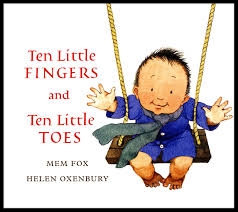
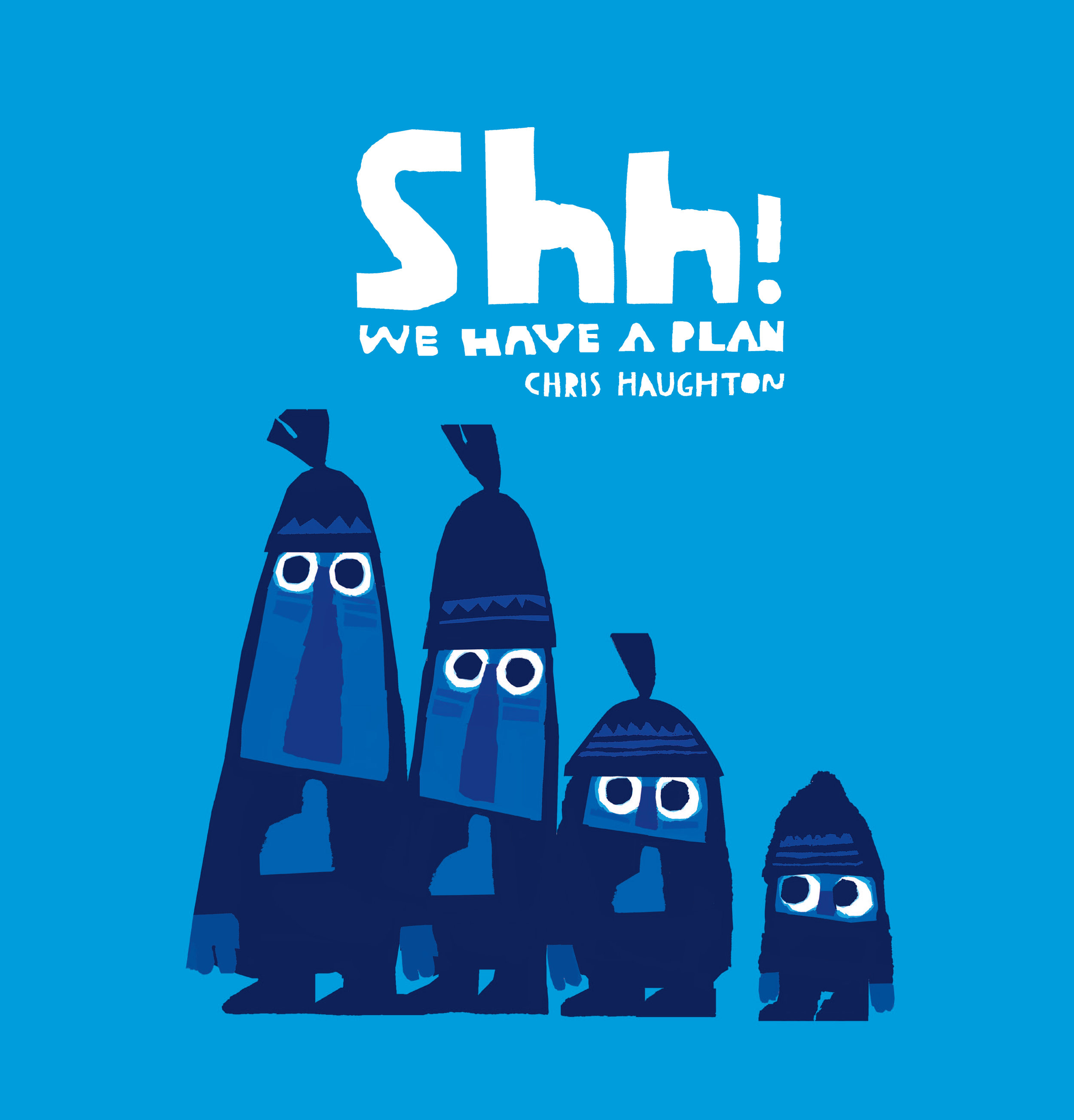

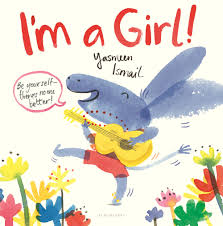
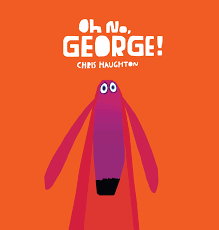
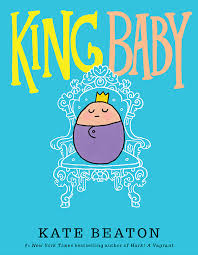









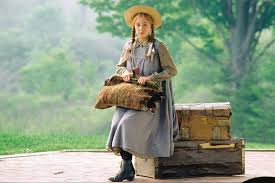

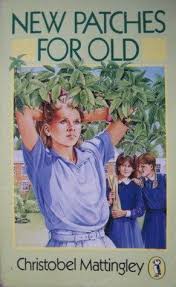



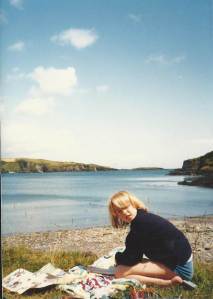





























![IMG_5156[2]](https://images.squarespace-cdn.com/content/v1/58973315e4fcb5808a5b7d9e/1486377414397-A1Y7YA7QJ3PS2RVSXGS0/img_51562.jpg)


